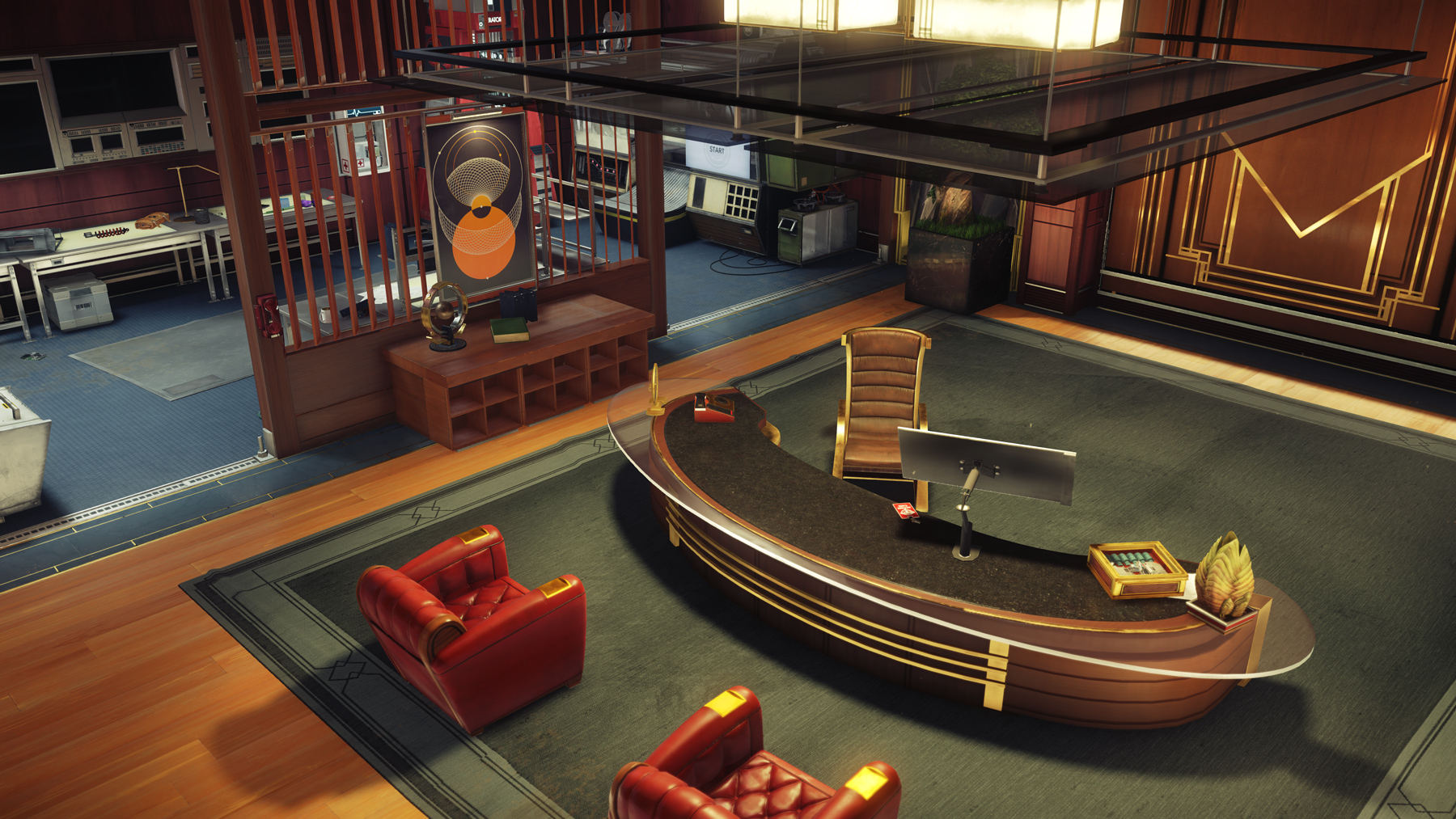[ad_1]
Keeping up appearances
The parts of Talos I built by Transtar have a distinctive, retro-futuristic look. They represent the company’s wealth and lofty ideals, but also the impact of Kennedy, and how his extended reign as president affected architecture, fashion and interior design. Art-deco typography lifted from the 1920s and 30s stand out on station maps and laboratory signs. Wooden floorboards and overused ash trays permeate every office. It’s a dark, decadent place, the kind The Great Gatsby might build if he woke up one day and suddenly decided to live in outer space.
Like everything in game development, it took time for Arkane to finesse this look. The team looked everywhere for “signature visual motifs” that embodied Kennedy and the early 1960s. A big source of inspiration was the Viceroy hotel in New York, near Central Park. While less than a decade old, the luxury tower borrows heavily from art deco culture, with guest rooms that resemble a tailored ship’s cabin. “If you imagine the station was built by a company informed by that sort of aesthetic, but then also had some futuristic layerings on top of it — that’s where we ended up,” Bare explains.

Talos I is split into different sections, complete with science fiction names like Hardware Labs, Psychotronics and Deep Storage. Some, such as Crew Quarters, are designed for leisure, with a huge swimming pool and cafeteria close by. Others, like the Neuromod Division, are meant for scientific research, or day-today repairs on the ship. Wandering through the hallways and nosing around people’s offices, it’s easy to believe that this was, indeed, a working station where brilliant minds collaborated and lived together. There’s a commitment to detail — everything, from bedside books to cluttered workstations, feels consistent and considered.
“Our approach is simple,” Bare says, “everything in the world should have a reason for why it’s there and why it looks the way that it looks.” Take the gorgeous, geometric-art prints dotted around the station. A book later in the game reveals they’re part of a series designed exclusively for Transtar by former street artist Patryk O. They all convey a space-centric theme, such as orbit and eclipse, through a mixture of circles and simple, deliberate line work. The posters symbolize the importance Transtar and its staff place in art, philosophy and risk-taking.
As you move deeper into the station, this elegance fades away. Talos I is like an onion with “layers” that span several decades. The core is the original Kletka station from the 1950s, all sparse and metal. The first laboratories were built by the US and the Soviet Union, and often feel like an old Russian submarine. The corridors are tighter, with exposed piping and hatches that lead to cramped ventilation shafts. Huge computers line the walls, crammed with physical buttons and switches. A needle dances from left to right on one of the readouts, while various red lights flicker on and off.
Source link
 Tech News code
Tech News code


